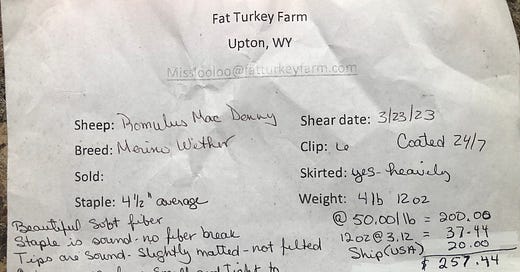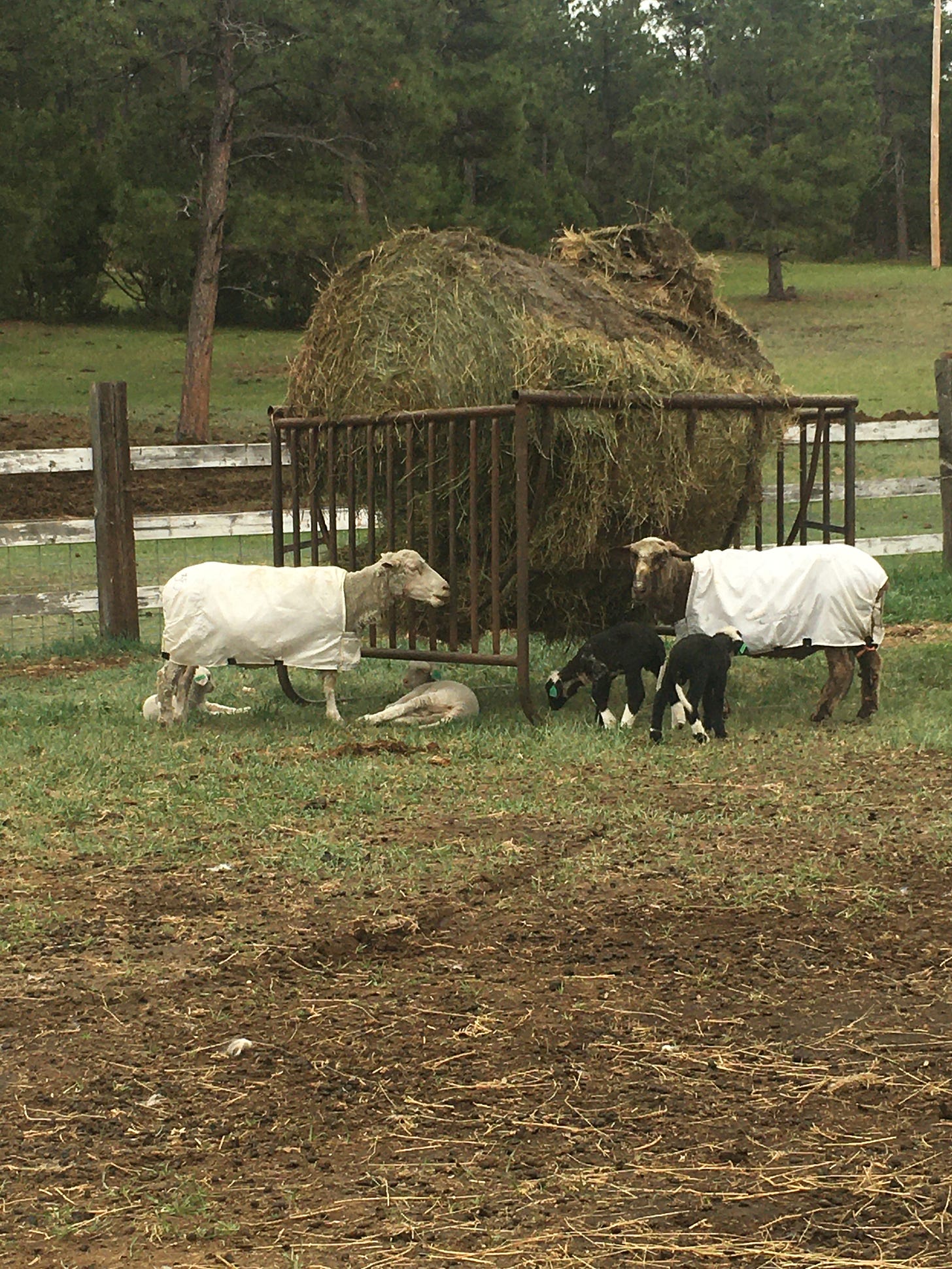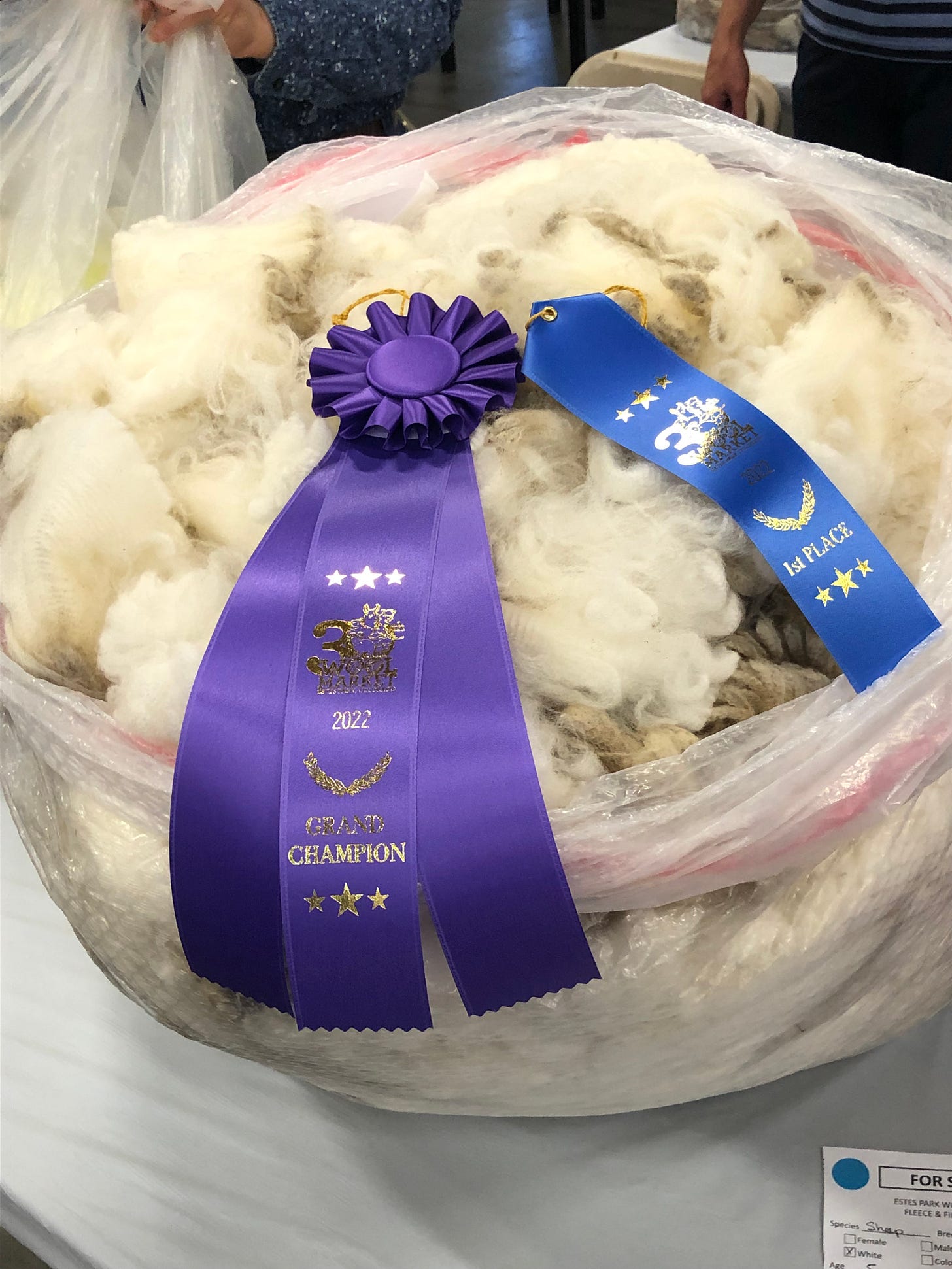Thinking of taking the plunge into buying a raw fleece? Good for you!! There are so many beautiful choices for you to discover.
Here are a few things to ask yourself and think about before you put your money down.
Breed
What do you plan to make with your fleece? Does it need to be soft enough for a baby to wear or are you planning on weaving a rug? Be sure to do the research into what breed of sheep will be best for your project. It is estimated there are over 1000 different breeds of sheep worldwide, so there will be one to suit your needs.
Here is a site with a quick break down of the different wool options and how they are measured in microns. Sheep 101: Kinds of Sheep
Research before you decide!
How to Find Your Fleece
There are so many options to locate the fleece you want. Facebook has many fleece for sale pages, you can google the breed you want and find a farm selling them, wool and fiber festivals will have fleeces amongst so many other goodies, fiber guilds and groups local to you can provide you word of mouth recommendations.
Questions to Ask
Ok, you found the breed you want, and you found a fleece for sale, here are the questions to ask before you buy. Don’t be shy about asking, any reputable breeder/seller will be more than happy to answer what you want to know. They want you to be happy with your purchase and tell all your friends about their stellar fleeces! If they don’t want to answer, consider that a red flag.
This picture is what I do when I put up a fleece for sale. I add this paperwork in that answers many questions for the buyer right off the bat.
Were the Sheep Coated?
Fact: Sheep live outside and outside is dirty.
Many flocks are coated to keep the worst of the mess out of the fleece. Sheep go thru an average of 3-4 coat changes during a growing season. I have a few that will go thru 5 changes.
Coating adds extra work for the shepherd/ess so expect to pay extra for a coated fleece. You won’t regret it!
Age and Sex
The age and sex of the sheep can play a factor in the quality of the fleece. Younger sheep have a finer fleece. The micron size will change as the sheep gets older. Pregnancy, nursing, or hormonal levels can affect quality also. My wethers are the ones that win grand prizes when it comes to fleece judging at fiber festivals.
Is it Skirted?
Skirting is the process of pulling off the edges of the fleece that are unusable for some reason. They are the parts around the back end that are covered in pee and poop, the belly wool which can be short, leg wool, neck wool that has an excess amount of VM (vegetable matter ie hay) and face wool.
Find out how much skirting has been done. Was it just a rough skirting that may still have areas with a lot of VM in it? Has it been heavily skirted so you are getting the prime part of the fleece called the blanket? Has the seller gone so far as to skirt and pick the fleece?
My personal philosophy is I don’t want to sell fiber that can’t be used, so I skirt heavily, and I pick each fleece prior to it going on the market.
Picking is the process of pulling off anything that is not usable fleece. You would be amazed at what i’ve found when picking a fleece. The usual hay, of course, also pine needles, dead bugs, scabs from a cut, dog hair (my sheep live with guard dogs, and they do cuddle) and on one memorable occasion a sheep toenail that evidently flew off during a trim and landed on another sheep.
Second Cuts
Second cuts are a fact of life with fleeces. Regardless of how good the shearer is, second cuts will happen. These are the short bits when a shearer goes over the same area two or more times. Ask what the seller feels is the amount of second cuts on the fleece. Most of those seconds should have come off when the fleece is skirted. The shaking and bouncing of the fleece on the skirting table knocks most of those off. A picked fleece will have a very small amount of those second cuts as they are picked out already, but even a picked fleece can have some that got missed.
Staple length
The staple length is how long the fiber is after shearing. The length can vary over the entire fleece. Side fleece can be shorter than what is on the back. A bad shearer can cut the length in half with a bad pass (ask me how I know). Different breeds grow shorter or longer fleeces. Does the length meet your needs?
I give an average length when I sell. Some parts may be longer or shorter, and I add a picture of the length against a ruler.
Is the Staple Sound
This is a huge consideration when buying. Sometimes a sheep during the growing cycle can have a problem that will lead to a fiber break. This is a weak spot on the fiber where it will come apart when you pull on it. Bad feed, lack of proper salt or mineral access, excess predator stress, or illness can all cause a fiber break.
If you can get your hands on the fleece, such as visiting the seller, or locating it at a fiber festival, you can test the staple yourself. Teach yourself what 7 pounds of pulling pressure feels like by using a hanging fish weighing scale. If the fiber breaks at less than 7 pounds of pull, it is probably weak.
If you can’t touch the fleece in person, make sure the seller tells you.
The Tips
How sound are the tips? Are they brittle, felted or matted? A poorly fitting coat can felt the tips. Excess rubbing from itching can felt tips also. My coated fleeces have some tip matting but they pull apart easily.
A word on lamb fleece. Commonly called “lamb tips” when the baby is in utero, the amniotic fluid affects those fleece tips making them brittle. Combing a lamb fleece will usually get those tips off and not into your roving and spun fiber. Carding will also break the tips off but they will get pushed into your rolog and thus leave neps in your spun fiber.
Why is That White Fleece Yellow?
Sheep produce a grease called lanolin. It serves many purposes for the sheep. It acts as waterproofing, moisturizes the sheep’s skin, and helps with heat regulation.
Different breeds have varying lanolin production. My Merino’s carry a pretty heavy load.
Once a fleece comes off a sheep, their body temperature no longer keeps that lanolin soft. As lanolin cools off it turns various shades of yellow, this is called yolk. This lanolin will wash out with proper scouring of the fleece.
However, sometimes that yellow is not yolk but a bacterial infection of the fiber called canary stain. This does not wash out. You can ask the seller to show you a washed sample if you are concerned. A good seller will not put out a fleece that is canary stained to start with.
Price
Is the price something you can afford? Different breeds command different prices on the market. How the sheep were cared for, coated, how much skirting, and fiber quality all play a part in the price.
If you don’t need an entire 10 pound fleece, will the seller split off the quantity you need? Keep in mind most raw fleeces are sold as an entire fleece and sellers are reluctant to split it apart.
Also find out if the seller offers a money back guarantee and what are the terms of that.
Is Your Seller Reputable?
On Facebook there are a few fiber transaction groups where you can read reviews of sellers. Conversely, sellers can also read reviews on buyers. Sadly, there is good and bad on both sides of this equation.
Now What?
Congratulations on buying your fleece. Bet your wondering what to do with it now.
First thing, pick it. Even if it was picked before you bought it, you want to go thru and get out anything you don’t want in your finished garment. Pickers are human and we do miss things.
Don’t be afraid of VM. I’ve taken skirtings and made beautiful garments out of fleece with lots of VM in it.
Combing will remove 98% of the VM from the fleece after scouring. Carding will loosen up the VM but not remove it all and you will have bits still in your rologs.
I won’t get into scouring here, it’s far too detailed to put here. I will, however, recommend this book as the scouring bible.
The Art of Washing Wool, Mohair and Alpaca
Disclaimer: I do not receive money for this recommendation.
Once your washed, it’s up to you how you spin, felt, weave, or do whatever with your fleece!
That’s about it! Happy Fibering!
Blessed Be!








Great comments and information. But I have a better idea, I just buy from you!
Thank you for this comprehensive guide. I am just a novice spinner but someday hope to be confident for handling fleece.